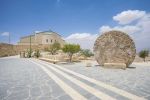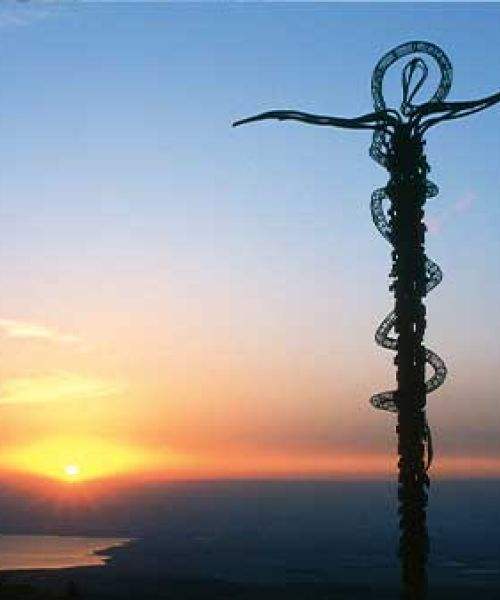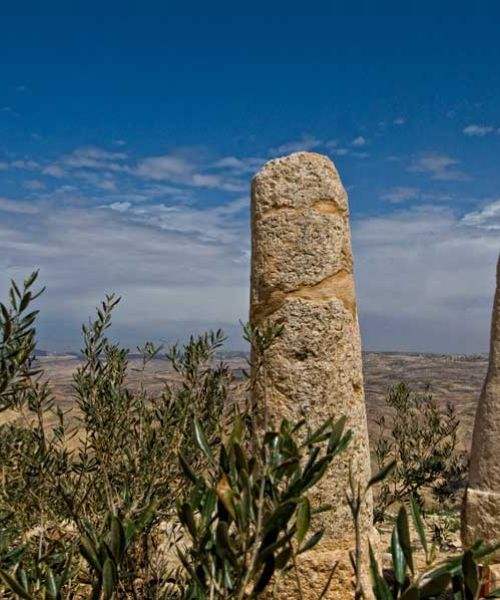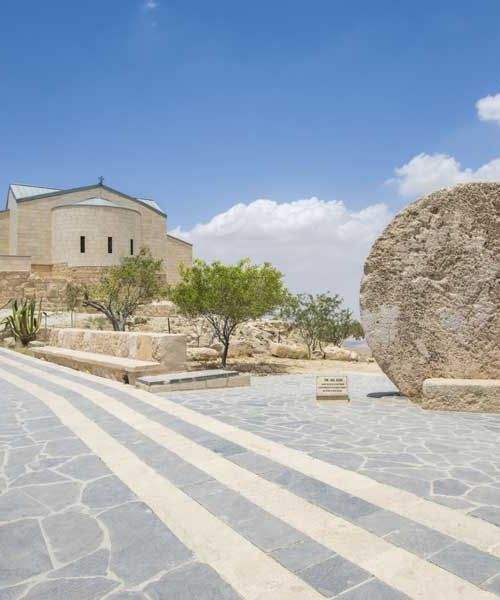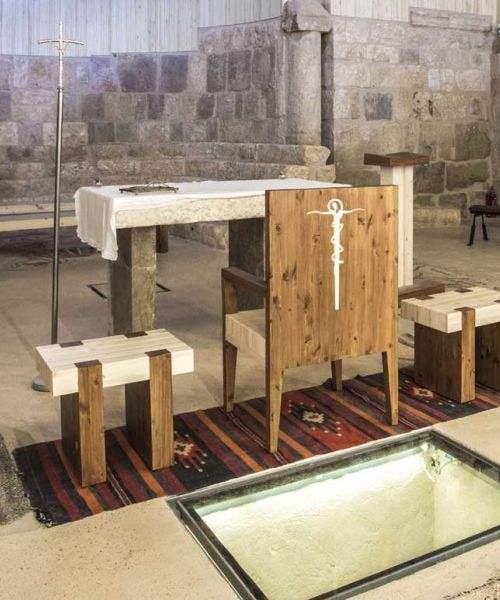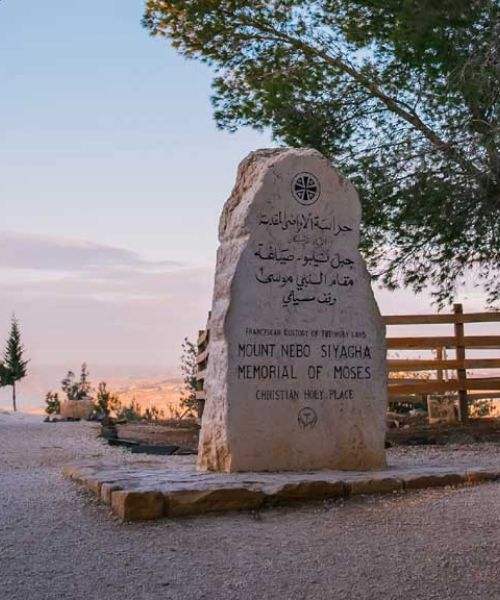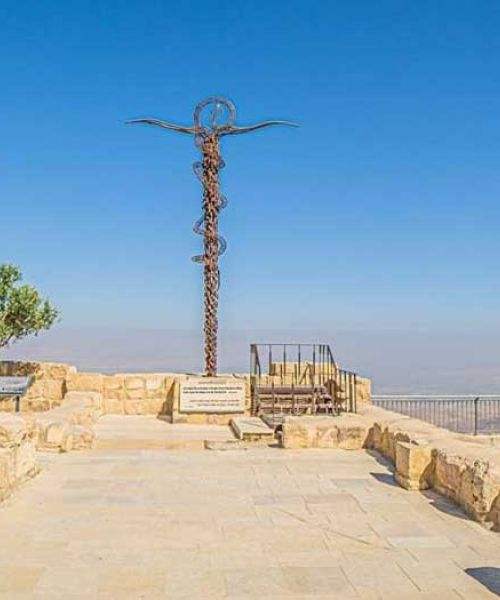Mount Nebo: A Sacred Site with Breathtaking Views
Located 10 kilometers west of Madaba, Mount Nebo is one of the most revered biblical sites in Jordan. Believed to be the resting place of Moses, this windswept summit offers spectacular views of the Jordan Valley, the Dead Sea, the West Bank, and even Jerusalem on clear days.
Mount Nebo is best known as the place where Moses viewed the Holy Land but was not permitted to enter. A church and monastery were later built here to honor him. The site is also mentioned in the Book of Numbers and the prophecies of Isaiah and Jeremiah, highlighting its historical and spiritual significance.
A must-visit for pilgrims and history enthusiasts, Mount Nebo connects visitors to Jordan’s rich biblical heritage.
In the fourth century, three domed buildings were erected on Mount Nebo, where the current altar now stands. These structures, honoring Moses, evolved into the church and monastery seen today, preserving the site’s spiritual and historical significance.
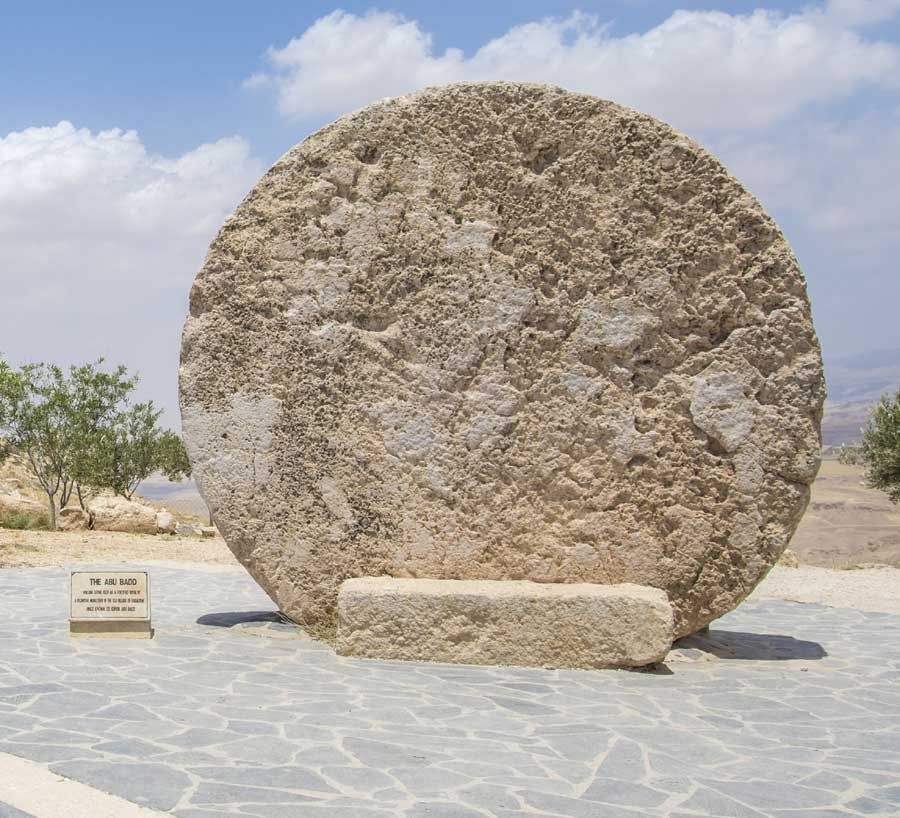
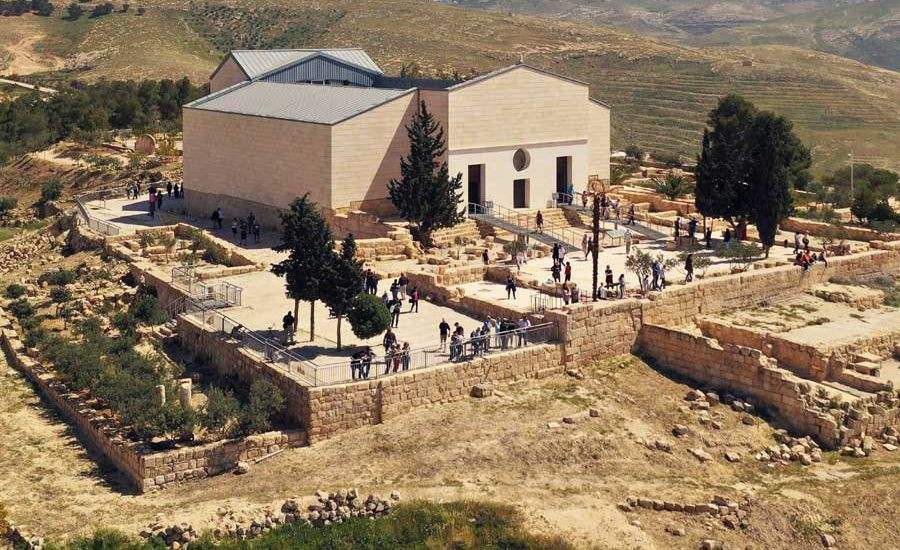
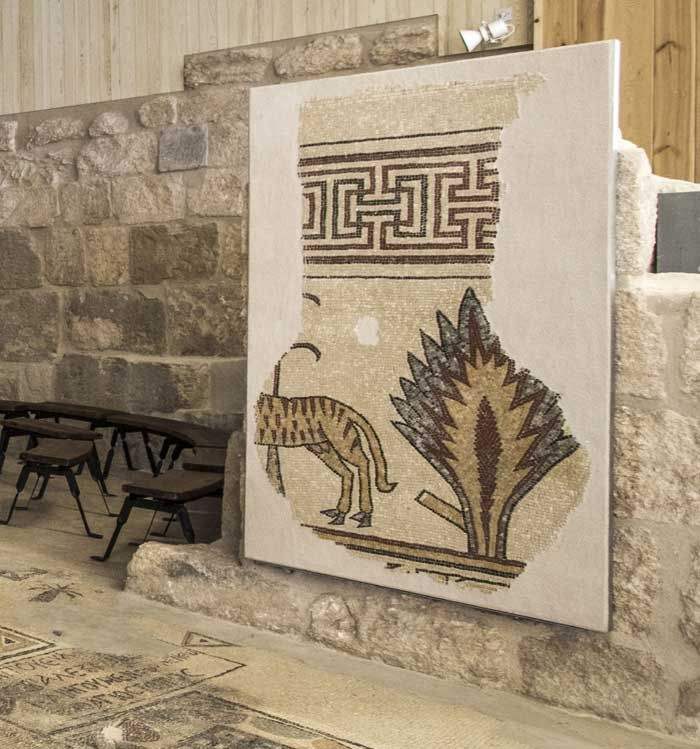
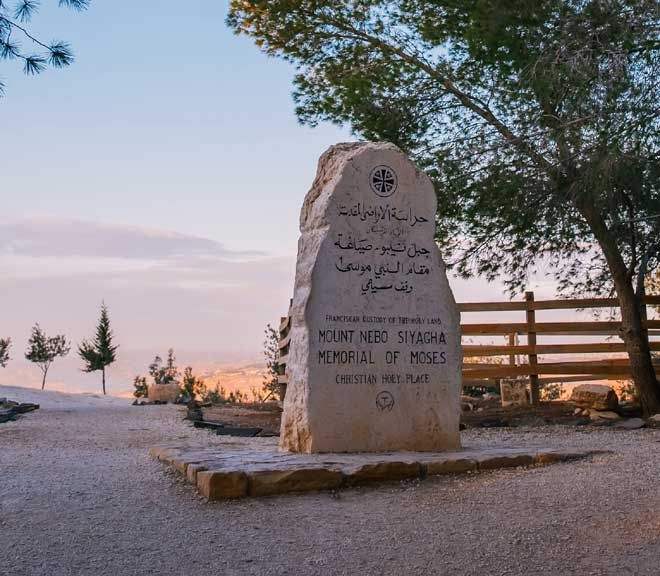
Moses the servant of the LORD died in the land of Moab
Mount Nebo, believed to be where Prophet Moses viewed the Promised Land, is a deeply spiritual and historical destination. According to Deuteronomy 34:1-6, Moses stood here before his passing, though his burial site remains unknown. This Jordanian landmark attracts pilgrims and history enthusiasts alike.
In the 4th century, three domed structures and two small churches were built here, alongside a hidden passage with mosaic-decorated graves. The site features a beautifully mosaic-adorned baptistery and a large cross on the southern floor.
Today, visitors can explore these ancient ruins, admire the mosaics, and enjoy stunning views of the Jordan Valley and Dead Sea. Mount Nebo is a must-visit for anyone exploring Jordan’s biblical heritage.
MOUNT NEBO
Discover Mount Nebo: A Sacred Biblical Landmark in Jordan
Mount Nebo, the highest point in the ancient Kingdom of Moab, holds profound significance in Abrahamic traditions. Referenced in Deuteronomy 34:1, it is where Moses ascended to view the Holy Land before his passing: “And Moses went up from the plains of Moab to Mount Nebo, the top of Pisgah, which is opposite Jericho.”
First inhabited by a Christian nomadic tribe in the 4th century, this sacred site is steeped in religious history. Visitors can explore the ancient ruins, including early churches and stunning mosaics, while reflecting on their spiritual roots.
From the summit, enjoy breathtaking panoramic views of the Dead Sea, the Jordan Valley, and on clear days, even the skyline of Jerusalem. Mount Nebo is a must-visit destination for those seeking to connect with biblical history and experience the beauty of Jordan’s holy landscapes.
